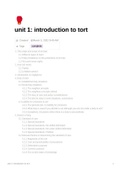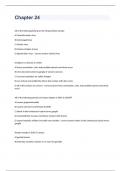Lecture notes
PGDL University of Law Tort Law Distinction Notes 2023/2024
- Module
- Institution
A collection of notes for the Tort Law module on the PGDL course at University of Law. I took the online course in 2023/2024, and achieved a 86% using these notes.
[Show more]




